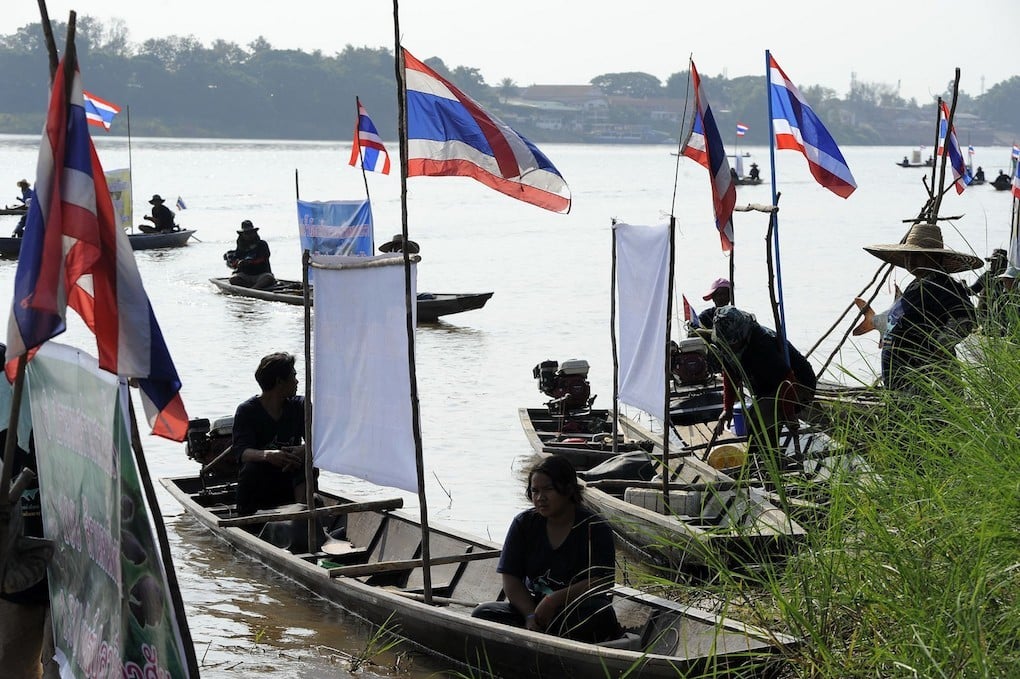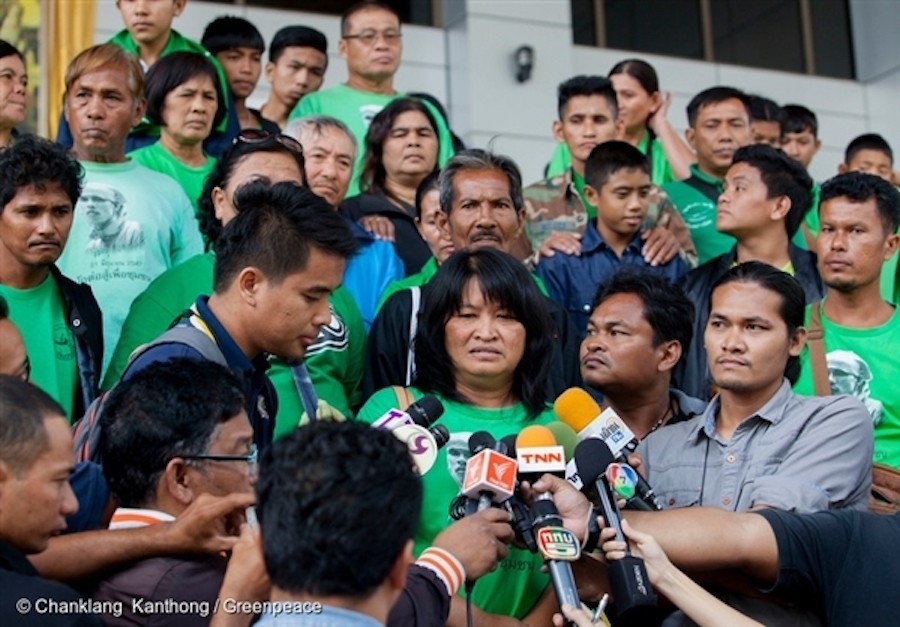At the November 20 session of the 24th APEC Summit, a high-ranking leader suggested developing agriculture in a sustainable manner in tandem with the effective use of natural resources, including cross-border management of water resources.
Category: Laos
Endangered dolphins at risk as controversial Don Sahong dam takes shape
“When I was born, my grandparents told me, ‘The dolphins are special. If you see them, you will get good luck. If you capsize your boat, the dolphins will save you. You can trust them.’”
The young man in his 20s is standing on the bank of the Mekong River in a section that a small pod of the critically-endangered Irrawaddy dolphin calls home – a home which is about to sit next to perhaps the most divisive hydropower dam project in the region.
Xayaburi dam: ‘Testing ground for untried technologies’
“I miss the Mekong.” A sad smile flickered across the face of Thongkham Phalibai, a mother of two and owner of a grocery store in Luang Prabang.
“I was living by the river for so long, earning money from gold panning and farming. But I can’t go back there anymore. I don’t know where my old house used to be.”
It has been four years since Thongkham left a simple life in her old village of Pak Neun for a new one in Neunsavang, a remote village 80 kilometres south of Luang Prabang. She was among the 2,986 villagers who were forced to resettle because their homes either sat on the location of the controversial Xayaburi dam or were in areas that will be flooded.
Development as Unfreedom: Shrinking Democratic Spaces in Asia
The real sign of development and democracy is how a country respects, protects and promotes freedoms and human rights. The biggest challenge of our times is the increasing gap between the promises and performance of states and governments in relation to the protection of the freedoms and human rights of their people. This is most evident in many countries in Asia, with the shrinking of freedom and democratic spaces resulting in increasing attacks on human rights defenders.
Open Letter to the Developers of the Don Sahong Dam
The Save the Mekong coalition has expressed concerns over the development of the Don Sahong Dam in Champassak Province, Lao P.D.R. The network, consisted of communities, local and international environmental groups, reiterates their concern over the construction of the Don Sahong Dam due to its location in an area critical to Mekong fish migration, the potential impacts of the project on regional fisheries are severe. They stress that food security of thousands of people in the Mekong Basin is dependent on many of the migratory fish species which have traditionally passed through the Hou Sahong channel. The also claim inadequate information has been made available to date regarding the scale and scope of the project’s impacts, the ongoing studies and monitoring efforts that are informing the project’s ‘adaptive and flexible approach’ to mitigation, and confirmation of the implementation and efficacy of the project’s mitigation measures.
Mekong projects ‘to kill biodiversity’
DEVELOPMENT projects in the lower reaches of the Mekong River will take a great toll on the area’s biodiversity, experts have warned, with much of its fauna and flora facing imminent extinction.
In the face of major projects, such as the plan for a navigation route on the Mekong from Chiang Rai province down to Luang Prabang in Laos, as well as a controversial dam, concerned academics and experts attended the Greater Mekong Forum in Bangkok on Friday.
Commission chief insists ‘imperfect’ body has river basin’s interests at heart
AS THE Mekong region faces intensifying challenges from developments needed by its riparian countries including Laos’ latest mega-project, the Pak Beng Dam, the Mekong River Commission (MRC) insists that it is still the best institutional arrangement to ensure sustainable development for the basin.
Pham Tuan Phan, who assumed the post of MRC chief executive this year, stressed that point while delivering his presentation about the organisation, empowered by the 1995 Mekong Agreement, at the Greater Mekong Forum last week, where leading river experts and policy-makers attended to find out the best approach to ensure the river’s sustainable development.
Incomes of Thousands of Cambodian Villagers to be Harmed by Don Sahong Dam
The lives of the Preag Romkil villagers have turned to grief since Laos started building the Don Sahong Dam on the other side of the border.
“Many of us express deep concerns on survival of the dolphins. There has been some dolphins that died here. We are afraid of bigger damages to happen caused by the dam construction. Our lives rely mostly on the ecotourist site and the dolphins. Laos gets benefits from the dam, but we do not, we are the losers”.
Laos Submits Mekong Dam Proposal
The government of Laos has submitted a request to the Mekong River Commission (MRC) secretariat to construct a dam on the Mekong River in the country’s northern Oudomxay province.
A call for basin-wide energy plans
Preparatory work for the next big dam on the Mekong — Pak Beng — in northern Laos has begun. This news supports the widespread narrative that the current rapid pace of dam construction on the Mekong River will continue until the entire river is turned into a series of reservoirs. Certainly the construction of even a few large dams will severely impact food security in the world’s most productive freshwater fishery and sharply reduce the delivery of nutrient-rich sediment needed to sustain agriculture, especially in Cambodia and Vietnam’s Mekong Delta.
However, our ongoing research and communication with regional policymakers provides compelling evidence that not all of the planned dams will be built due to rising political and financial risks in the region. As a consequence, we have concluded in our most recent report that it is not too late for the adoption of a new approach that would optimise the inescapable “nexus” of tradeoffs among energy generation, food security, and water use and better protect the core ecology of the river system for the benefit of future generations.











